
The Annunciation
(South Side)
Bible Reference:
Luke 1:26-38
“And in the sixth month the angel Gabriel was sent from God unto a city of Galilee, named Nazareth, to a virgin espoused to a man whose name was Joseph, of the house of David; and the virgin's name was Mary. And the angel came in unto her, and said, Hail, thou that art highly favoured, the Lord is with thee: blessed art thou among women...” (Luke 1:26-38, King James Version)
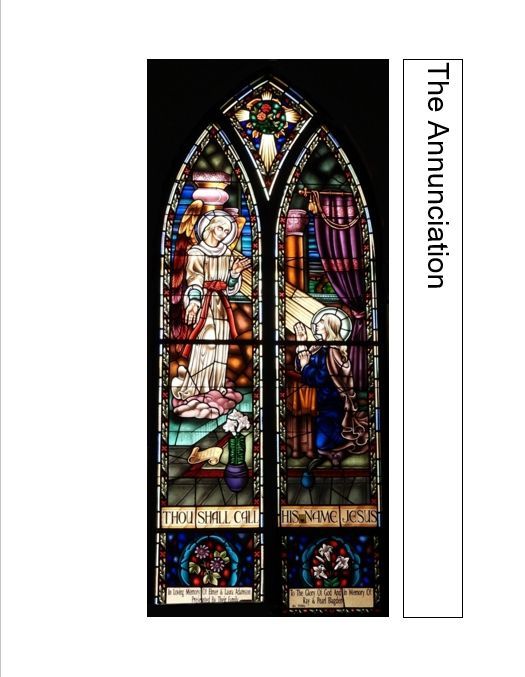
The angel Gabriel has beautifully feathered wings and wears a halo to indicate that he is the representative of the Divine, and he floats regally on a little pink cloud above the stone floor. Mary kneels in obedience, her hands and face show her surprise and wonder. Rays of light beam onto her from Heaven to indicate the directness of her selection. Her robe is blue, the traditional colour of virginity. At one time, the colour blue was the most expensive in a painter’s palette and so was used sparingly, only for the most sacred of objects and always for Mary’s robe.
At Gabriel’s feet lies a scroll which symbolizes the announcement or Annunciation. It reads “BLESSED ART THOU AMONG WOMEN” (Luke 1:28).
Also pictured is a vase with a lily plant. The lily is used extensively in Christian art as a symbol of purity, and has become associated with both the Virgin Mary and the Archangel Gabriel. In many scenes of the Annunciation painted since the 14th century, Gabriel is shown holding a lily or a lily is placed in a vase between Mary and the angel. Here the artistic tradition of the vase of lilies between the two individuals is echoed in glass.
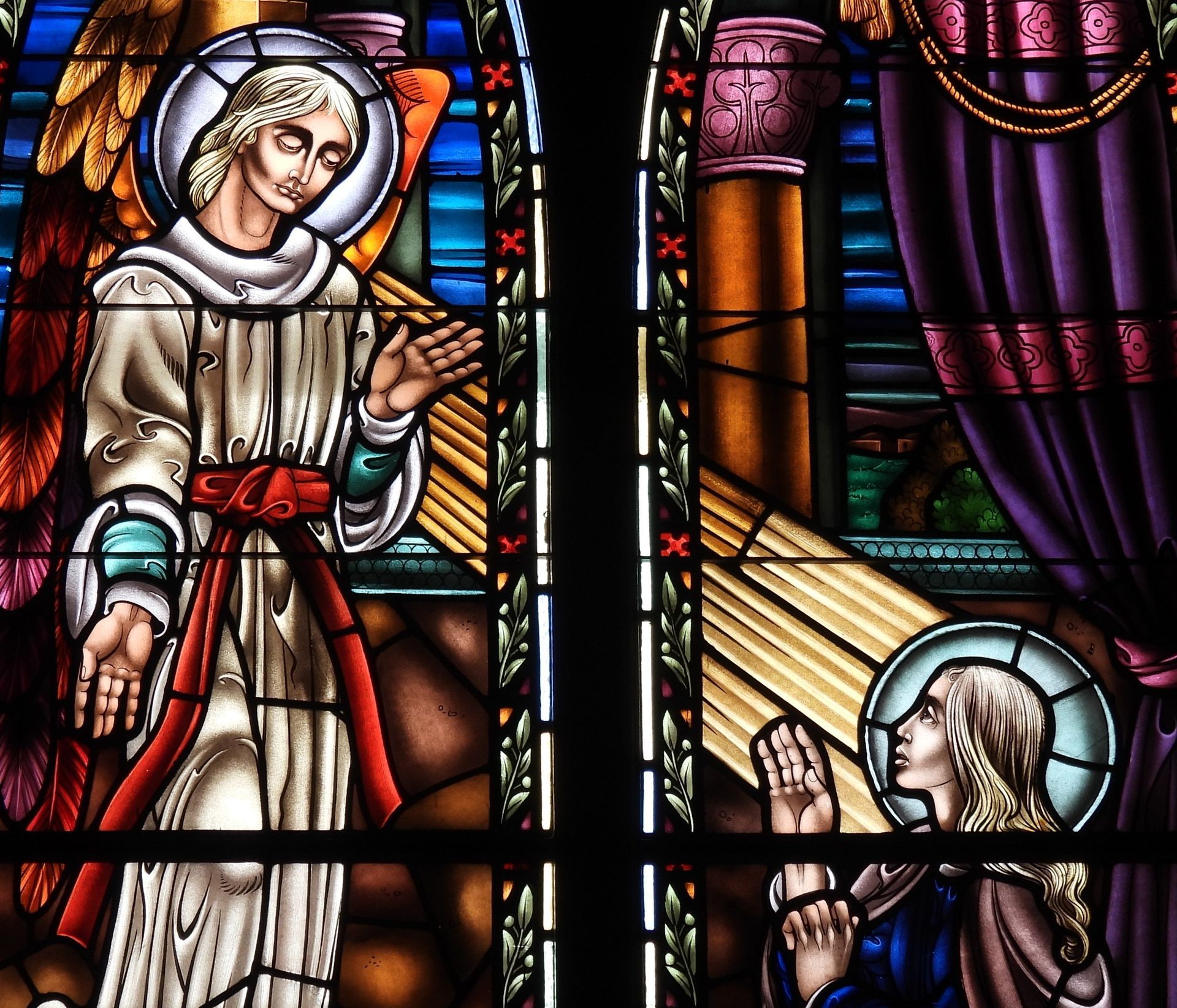
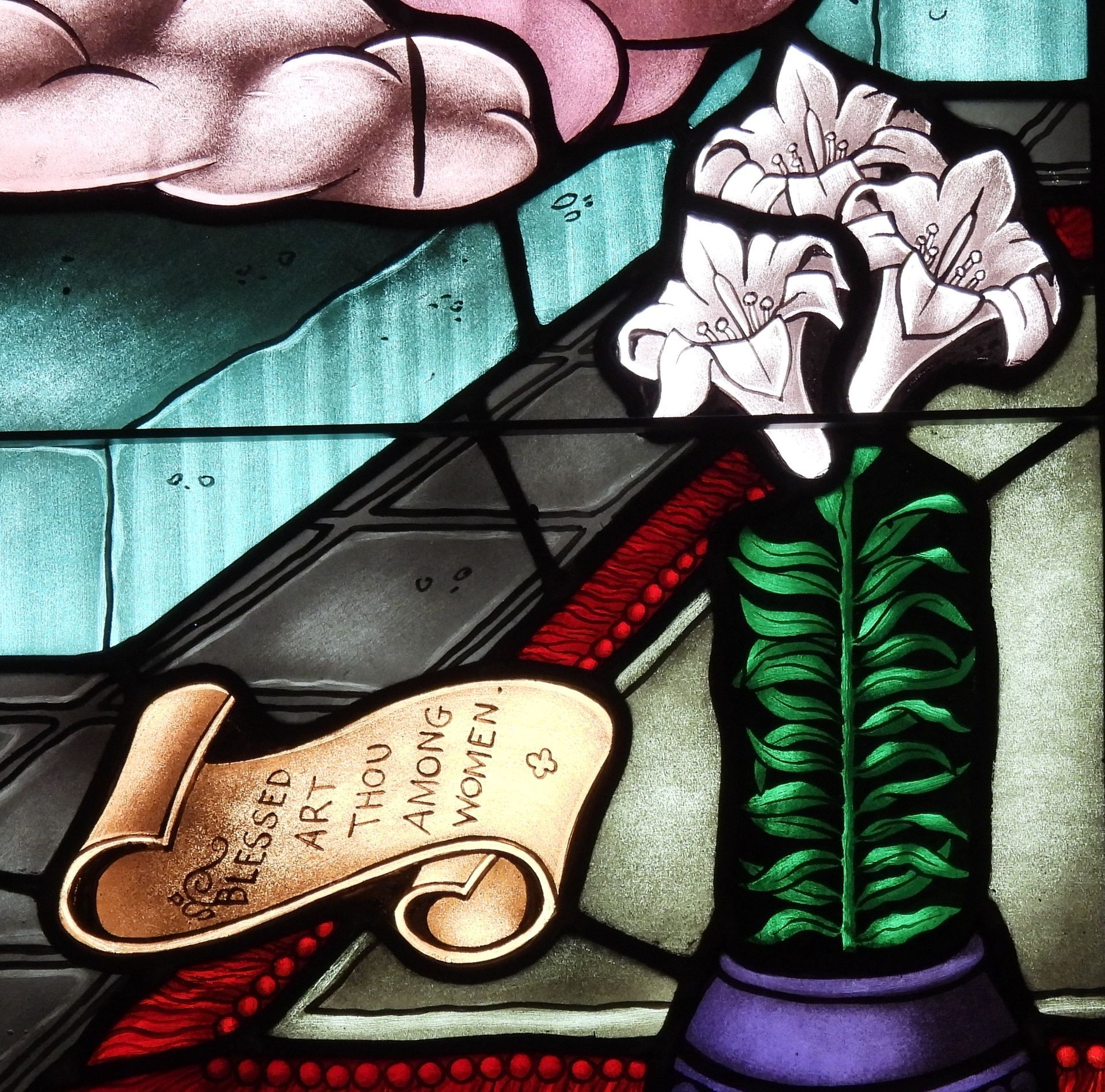
Kite
The kite pane in this window displays several red roses, a rose bud and a thorny branch. Generally, in both Christian and secular art, a red rose symbolizes love and passion and also martyrdom. The rose is considered by many to be the most beautiful of flowers, and so became a symbol for Mary. Legend says that the roses in the Garden of Eden were originally without thorns, and the inclusion of a thorny branch is a reminder of the human balance between beauty and hardship.
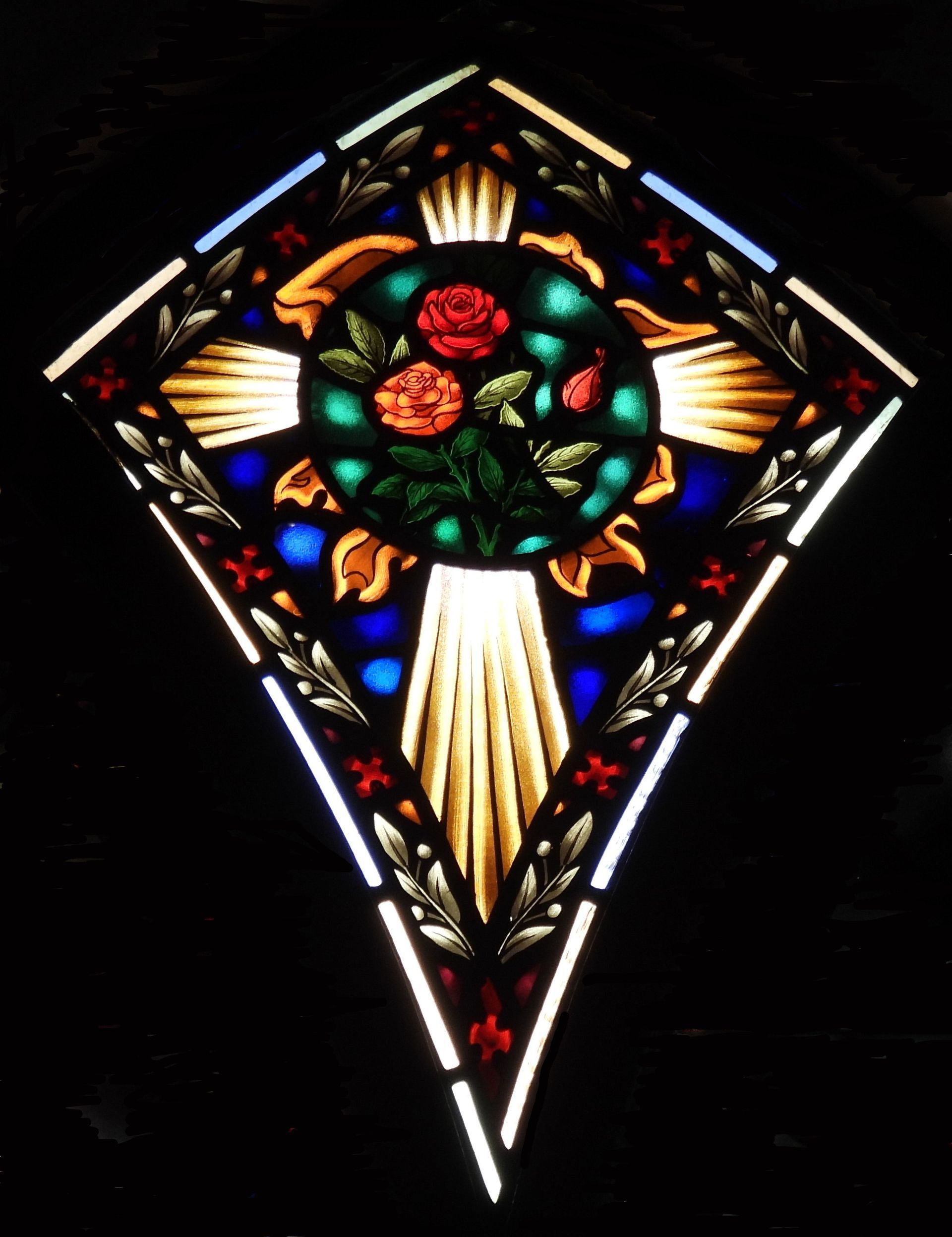
Dedication
In Loving Memory Of Elmer & Laura Adamson
Presented By Their Family
To The Glory of God And In Memory Of
Ray & Pearl Blagden
Dedicated in 1986
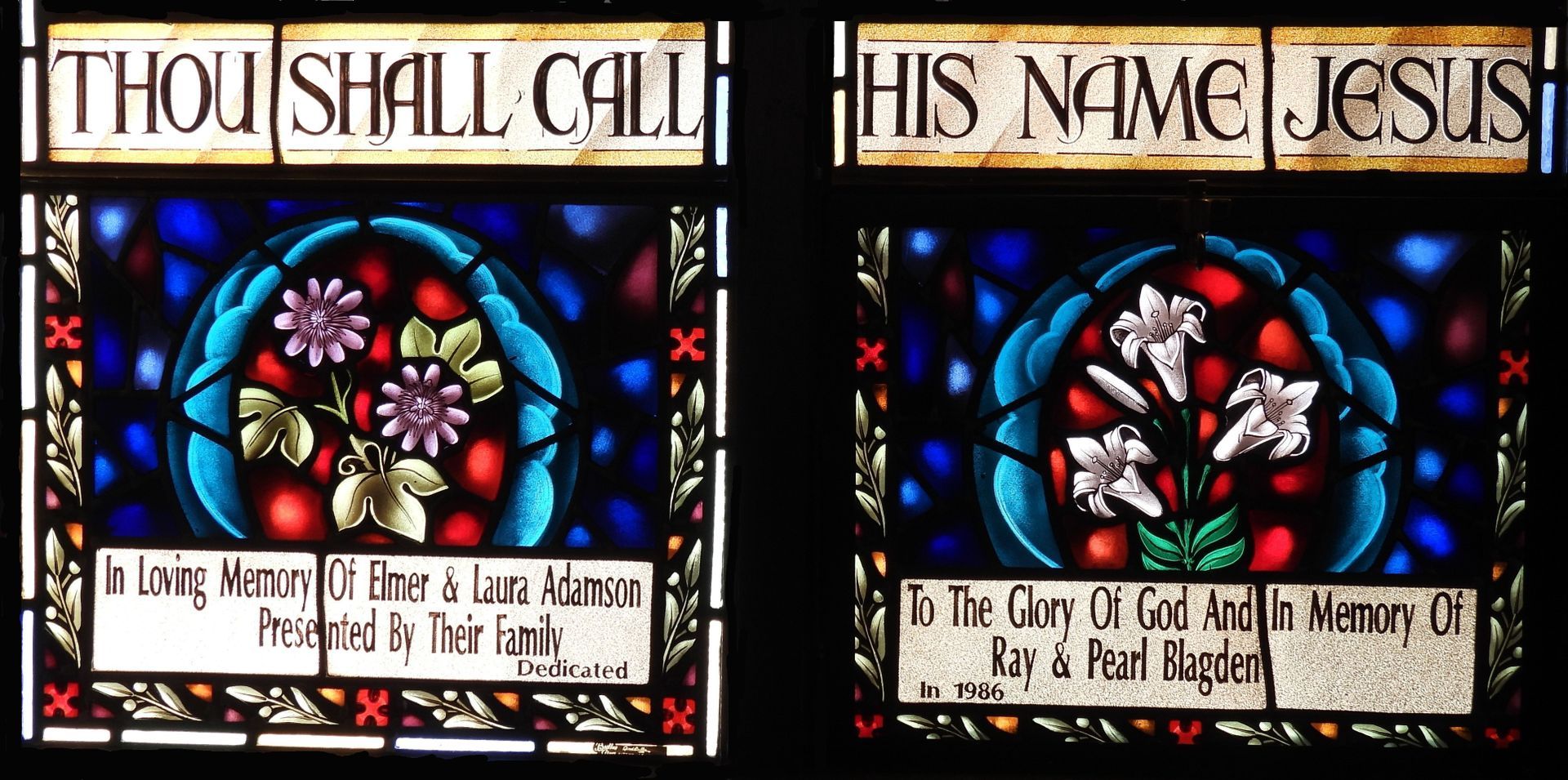
Lower Panes
The text “THOU SHALT CALL HIS NAME JESUS” appears in the story of the Annunciation in the gospel of Luke quoted above, but it is repeated and re-emphasized again in the gospel of Matthew, when an angel also appears to Joseph: “And she shall bring forth a son, and thou shalt call his name JESUS: for he shall save his people from their sins.” (Matthew 1:21, King James Version)
Left Pane
Saint Bernard (1090–1153) described Mary as “the violet of humility, the lily of chastity, the rose of charity…” and these three flowers are traditionally used as her symbols. The Annunciation window clearly uses roses and lilies, so one would assume that the small purple flowers in this lower pane would be violets. But they don’t look at all like violets! Carolyn (Adamson) Eaton said that her mother Laura loved flowers, especially delphiniums. She kept a large flower garden and always had bouquets of flowers in the house. On Mother's Day, every child had to wear a flower on her clothes. This was a tradition in our church and others: a coloured flower for a mother who still lived, and a white flower for one who had passed away. Perhaps these are violets to symbolize Mary’s humility, or just some favourite of Laura Adamson.
Right Pane
This flower symbol is more clear – the lily, which is often called Madonna Lily for its close association with the Virgin Mary. Lilies represent purity and the three blossoms symbolize the Trinity, with an unopened bud for the Virgin Mary.